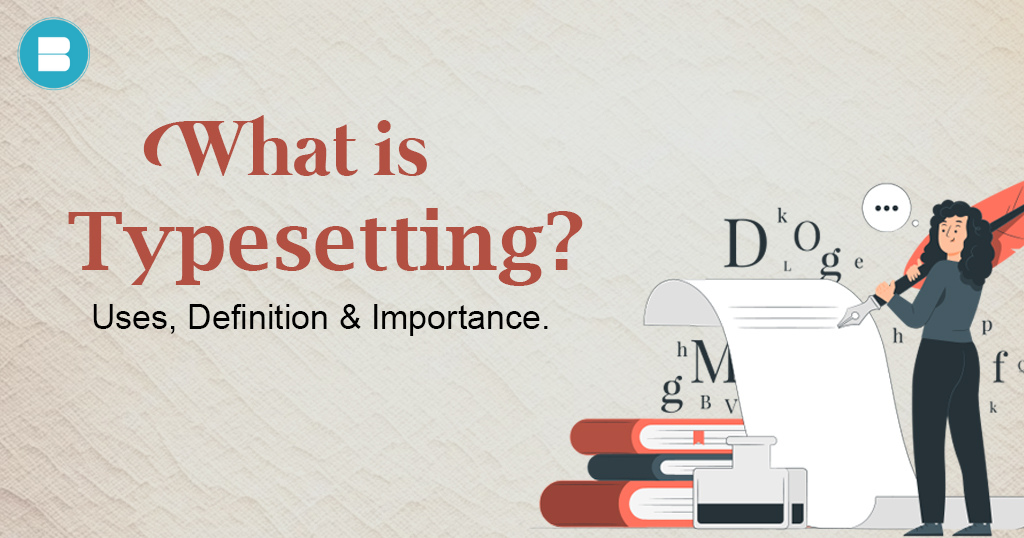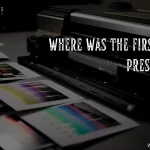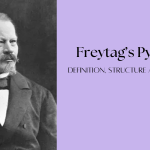In the world of publishing, design, and printing, the term “typesetting” holds a pivotal role. It’s a fundamental process that can make or break the visual appeal and readability of printed materials. But what exactly is typesetting, and why is it so important? In this comprehensive guide, we’ll delve into the intricacies of typesetting, its definition, its myriad applications, and its enduring importance in various fields.
Understanding Typesetting: The Explanation
Typesetting is a key technique that connects the worlds of text and design, ensuring that written material is both visually appealing and readable. Typesetting, at its foundation, is the art and science of organising text and graphical components, a process that is crucial in both print and digital media.
Read: Here’s a list of 10 best tips for embarking on your creative writing journey.
When we talk about typesetting, we’re talking about the precise coordination of diverse typographic components. Choosing the suitable fonts or typefaces, deciding acceptable font sizes, managing line spacing (leading), and organising the text layout on a page or screen are all part of this process. The ultimate purpose of typesetting is to provide material that engages and informs the reader while being harmonious and visually beautiful.
Typesetting in Action: An Example
To better grasp the concept of typesetting, let’s consider a real-world example. Imagine you’re holding a beautifully designed book. The text inside is impeccably arranged, with consistent font choices, uniform line spacing, and an elegant layout that guides your eyes effortlessly from one page to the next. This is the result of meticulous typesetting—a harmonious blend of art and science that transforms a manuscript into a reader-friendly masterpiece.
The Many Uses of Typesetting
Typesetting is a versatile process with a wide range of applications:
- Publishing: In the realm of book publishing, typesetting plays a vital role in creating visually appealing and readable books. It ensures that text and images are well-balanced, enhancing the overall reading experience.
- Graphic Design: Graphic designers rely on typesetting to arrange text and images in various design projects, from brochures and posters to magazines and websites. Effective typesetting is essential for conveying messages clearly and engagingly.
- Printing: Typesetting is crucial in the printing industry, where it is used to format newspapers, magazines, packaging materials, and marketing collateral. Proper typesetting ensures that printed materials are visually appealing and professionally presented.
- Digital Media: Even in the digital age, typesetting remains relevant. It is essential for creating e-books, websites, and digital publications. Good typesetting enhances readability on screens of all sizes.
DTP and Typesetting
Desktop publishing (DTP) and typesetting are closely intertwined processes that work harmoniously to produce visually appealing and well-structured content. DTP software, such as Adobe InDesign, plays a pivotal role in modern typesetting. These tools empower designers and typesetters to create layouts for various media, from print materials to digital publications. They offer precise control over typography, spacing, and the placement of graphic elements. DTP software is indispensable in the world of design and publishing, enabling professionals to seamlessly integrate typesetting into their creative workflows. It ensures that text and images come together cohesively to deliver a polished final product that captivates readers and viewers.
The Role of Fonts in Typesetting
Fonts are the fundamental elements of typesetting, influencing the visual tone and readability of a document. Typesetters carefully choose fonts that align with the content’s purpose and audience. Serif fonts, with their decorative strokes, are often preferred for traditional and formal documents, conveying a sense of elegance. In contrast, sans-serif fonts are chosen for a modern and clean aesthetic, ideal for contemporary design. The selection of fonts is a critical decision, as it significantly impacts how readers perceive and engage with the content. The artful pairing of fonts with the layout and content creates a harmonious reading experience, enhancing the overall aesthetics and effectiveness of the communication.
Typesetting and Layout
Effective typesetting extends beyond arranging text; it encompasses crafting the entire layout to achieve visual harmony. This includes determining margins, column widths, headers, footers, and the strategic placement of images and illustrations. A well-balanced layout ensures that readers can navigate the content with ease, finding it visually appealing and comprehensible. The layout serves as a visual roadmap, guiding readers through the material while enhancing their understanding and engagement. Typesetters and designers work together to strike a balance between textual and visual elements, resulting in a cohesive and aesthetically pleasing composition that resonates with the intended audience.
You may also read: List of Top 10 Famous William Faulkner Books of All Time
What are the Unit for Typesetting
Precision in measurements is critical in the field of typesetting. Points and picas are often used as standardised units of measurement by typesetters. A point is 1/72 of an inch in size and is the fundamental unit for measuring font size and line spacing. This tight level of typographic control ensures that writing is intelligible and visually beautiful. Furthermore, picas, which are equivalent to 12 points, are frequently used to describe column widths, margins, and other layout elements. The use of these units enables typesetters to operate with extreme precision, ensuring that every piece on the page or screen is exactly aligned. This accuracy adds to the overall professionalism and readability of the finished output, whether it’s a printed document or a digital publication.
Typesetting in Graphic Design
Graphic designers rely on typesetting as a crucial tool to bring their creative concepts to life. Whether they are creating fascinating posters, aesthetically attractive websites, or engaging commercials, accurate typesetting ensures that text blends seamlessly with pictures. It is crucial to developing a unified and aesthetically attractive design. The interaction of typography and visuals is critical to effectively communicating messages. Typesetters collaborate closely with graphic designers to ensure that the text complements the visual aspects, leading to a compelling and coherent design. In graphic design, typesetting is a strong tool that combines accuracy and creativity, letting designers convey their ideas with impact and complexity.
Typesetting in Publishing
Typesetting has a long and illustrious history in the publishing industry. Typesetters have played an important part in bringing books to life, from the early days of movable type to today’s digital processes. Even as technology has advanced, the importance of good typesetting has not lessened. Typesetters are in charge of precisely organising text, choosing typefaces, and creating layouts to guarantee publications are not only readable but also visually appealing. The tradition of brilliance in typesetting is inextricably linked to the history of literature, as it has aided in the transformation of manuscripts into printed works of art. Despite the fact that digital technologies have revolutionised the process, the core of typesetting’s contribution to the publishing industry lives on as a monument to the continuing power of well-presented textual information.
In Conclusion: The Enduring Significance of Typesetting
In a world inundated with text and visuals, typesetting serves as a guardian of quality and clarity. It bridges the gap between words and readers, transforming content into an engaging and accessible experience. Whether in publishing, graphic design, or digital media, typesetting continues to be a hallmark of professionalism and excellence. So, the next time you pick up a beautifully designed book or encounter a visually striking poster, remember that behind the scenes, meticulous typesetting has worked its magic, enriching your reading and visual journey.
Publish your book with BlueRoseONE and become a bestselling author. Don’t let your dream of becoming an author fade away, grab the opportunity now and publish your book – be it fiction, non fiction, poetry or more.
Happy Reading!
















